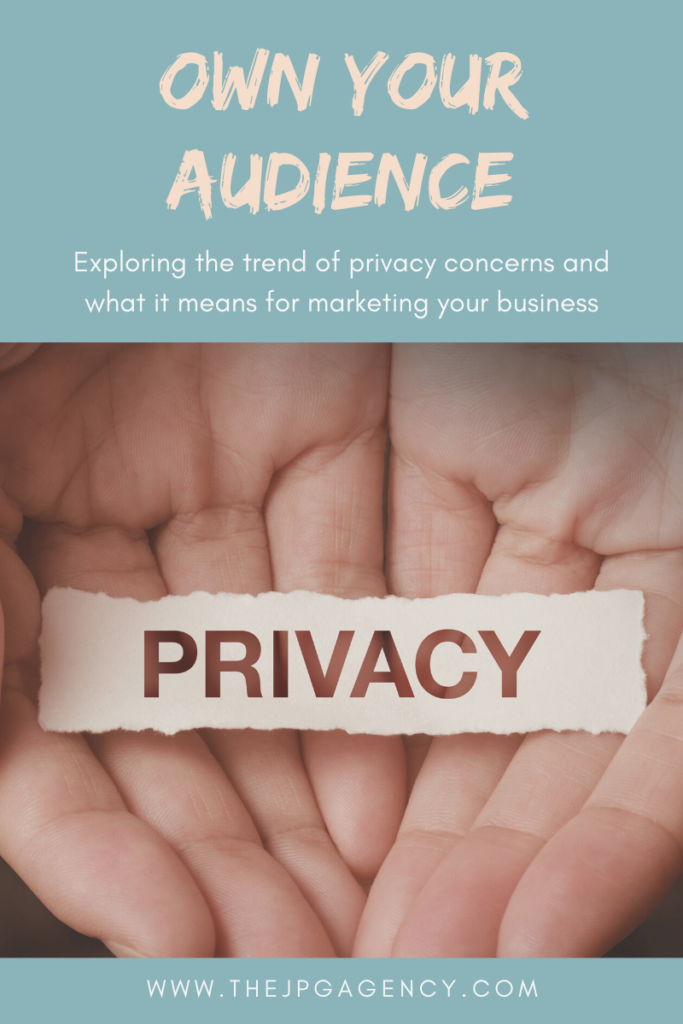6 Simple Ways to Increase Facebook Page Engagement
https://thejpgagency.com/wp-content/themes/osmosis/images/empty/thumbnail.jpg 150 150 Zack Jackson Zack Jackson https://secure.gravatar.com/avatar/098c4e07082b58c2463f7013515f98af?s=96&d=mm&r=gGuest writer: Andrew Scherer, HSBO
Almost 3 billion people use Facebook every month, including almost 300 million in the United States. With that number expected to increase to around 325 million in 2026, it’s no surprise that 93% of businesses are on Facebook.
Furthermore, 78% of consumers in the United States have made purchases after discovering products on Facebook. However, if you’re frustrated by the lack of engagement you are getting on your Facebook page, don’t despair. With a few simple changes, you can drastically increase your Facebook engagement and drive more traffic, sales, and conversions.
Here are six simple ways to increase Facebook page engagement.

1. Analyze Your Most Popular Posts
Your first step should be to analyze your most popular Facebook posts. That will allow you to discover things such as:
- Which topics are driving the most engagement
- What type of media gets the most likes, shares, and comments
- Whether short or long posts fare better
- Which CTAs work best
For example, you may find out that posts with memes get more reactions or that posts with GIFs get more shares. Or, you may learn that asking a question leads to more comments or that using a specific type of CTA results in more click-throughs.
Facebook Insights has all that you need to analyze your top posts. There, you can sort your top posts by shares, likes, or comments. I suggest doing all three to figure out the specific factors that lead to each of those three. Then, you can try to combine all those factors in future posts to get more post interactions.
Like in SEO, the 80/20 rule applies here: You will likely discover that 20% of the strategies or tactics you have been using generate 80% of all your success on Facebook.
You will need a Facebook page, as opposed to a private profile, to access those insights.
2. Post What Your Audience Wants
It sounds simple, but it’s necessary to stress nonetheless. That’s because too many businesses post what they want to post instead of what their audience likes.
Or, they post what they think their audience enjoys. However, their audience may want something different.
So, how can you find out what your audience is interested in? Analyzing your top posts is one way to do that, but you don’t have to stop there. There is a lot more information you can glean from other sources.
I suggest using Facebook Audience Insights, which you can access in the Facebook Ad Manager. There, you can drill down into the specific demographics of your target audience, including:
- Age
- Gender
- Relationship and marital status
- Education
- And a lot more
I advise taking a look at the Interests section. There, you can learn about the types of pages your target audience has expressed an interest in on Facebook. If a large percentage of your audience seems interested in a topic, consider incorporating it in your future posts.
It’s also worth asking your audience directly. An easy way to do this is to set up a poll on Facebook. If you have a Facebook page, this is straightforward – create a post and select the poll option. Add a few different response options, and set a time for your poll to end.
3. Keep Your Posts Short
Facebook doesn’t limit the length of your posts like Twitter does (technically, there is an upper limit, but it’s over 63,000 characters). Nevertheless, if your posts are too long, people will just gloss over them.
When long posts show up in users’ news feeds, Facebook will only show the beginning of those posts. Users will have to click on “See more” to reveal the rest of the post. That’s why your most important information should be at the top of your post. At the very least, include an intro that is eye-catching and engaging.
However, if people click on your post to read more and discover a lengthy essay, they won’t bother reading through it.
Consider keeping your posts to just one or two paragraphs. That way, people will be able to read your entire post, without any of it getting hidden by Facebook in the news feeds.
You’ll be surprised by how short you can make your Facebook posts and still get superb engagement. You might think that longer posts engage better, but they don’t. The ideal Facebook post length for optimal interaction is just 50 characters, according to a Buzzsumo analysis. Generally, the longer posts get after that, the less engagement they attract.
4. Don’t Disregard Images and Videos
Did you know that Facebook posts with images get more than double the amount of engagement as text-only posts?
The reason for that is simple. Humans are visual creatures. Half of our brains are involved with processing visual information. We can identify images we see for just a few milliseconds, and we learn and remember information better when it’s presented in a visual format.
When people are scrolling through Facebook, they are often relaxing or distracted. They might not be in the mood to force their brains to concentrate on a block of text. Seeing what their friends are up to by browsing images and videos they uploaded is a lot easier and requires less effort.
Facebook, above all, is a social platform. People go there for the social aspect and less so for discovering businesses and products. Nevertheless, by using visual imagery, you can overcome that obstacle and make your posts eye-catching, fun to look at, engaging, and interesting.
As you may expect, videos also make your posts infinitely more exciting and engaging. Typically, video posts do a lot better than posts with images. Nevertheless, you can’t make all your posts into video posts – you want to spice things up a little.
Even when posting images, you want to vary the type of photos you post. For example, you can include professional product pictures in some posts, but include snapshots of your team and office space in others. You can upload GIFs and memes to foster a stronger relationship with your fans and catch the attention of even more followers.
Just be original! Don’t lift memes off the internet. Instead, follow meme pages on Instagram to learn about recent meme trends and make unique variations of those memes, geared towards your niche and followers. Remember that memes won’t work well for every niche – they tend to work better with younger audiences.
5. Post at the Right Time
Not all businesses realize this, but Facebook won’t show your post to all your followers. It will only show each post to a small percentage of fans. Facebook looks at the pages and profiles a user engages with most often when deciding which content to show them, and in which order to prioritize that content.
In addition, it won’t necessarily show all your posts to even your most engaged followers. Or, it might display some content further down in their feeds, and they may never see it.
Posting at the right time can help you beat the algorithm, as it increases the chances of your followers coming across your content. When your followers spend more time on Facebook, Facebook will end up showing them more content than usual.
So, what is the best time to post on Facebook? Many studies have been done on this, with different studies suggesting different optimal times. However, as a general rule, afternoons seem to be a good time, especially on Thursdays and Fridays. At those times, people are at work but are tired and are looking for distractions.
Early morning during the week may also be a good time. Weekends may not work as well, as people may be busy spending time with their families or relaxing.
It’s worth pointing out that your followers may live in different time zones, especially if you run a global ecommerce store. Look at your audience demographics to see where they are located.
Also, the optimal time varies from one target audience to another. That’s why it is better to do your research instead of relying on the research of others. Publish posts at different times, on different days, and track engagement for each post. Eventually, you will notice trends, and you will be able to pinpoint which times work best for you.
6. Engage With Commenters
Finally, engage with commenters! If people comment on your posts, but you never reply or even like their comments, they will eventually stop commenting and engaging with your posts. Nobody wants to feel ignored, as if their opinions are not valued.
Reply to comments regularly. Even if you schedule posts to be published in advance, you need to check in on your page and engage with comments. You don’t have to respond to each comment, but the least you can do is like or react to them.
Final Thoughts
Engagement on Facebook is critical. Facebook uses engagement to decide which content to show to which users. If you can get people to engage with your content, it will create a snowball effect. The more they interact with your posts, the more Facebook will show them your content, leading to even more engagement. That makes it easier to eventually convert them into clients.




